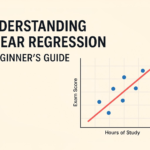Physical Address
304 North Cardinal St.
Dorchester Center, MA 02124

Discover how AI in the stock market is transforming the way we invest—and how you can tap into this game-changing technology to boost your portfolio, even if you're not a tech genius.
AI in stock market trading has transformed how investors approach financial decisions. Have you ever wondered how some traders seem to have an almost supernatural ability to predict market movements? Or how major financial institutions process the massive amounts of data flowing through global markets every millisecond? The answer increasingly lies in artificial intelligence.
The implementation of AI in stock market analysis represents perhaps the most significant technological revolution in finance since the introduction of electronic trading. We’re witnessing a fundamental shift in how investment decisions are made—moving from intuition-based approaches to data-driven strategies powered by sophisticated algorithms. This transition isn’t just changing who succeeds in the markets; it’s redefining the very nature of financial analysis.
When we talk about AI in stock market applications, we’re referring to a spectrum of technologies that range from basic automation to complex predictive systems. Some AI tools simply execute trades faster than humans could, while others analyze satellite imagery to predict retail sales before earnings reports are released. The most advanced systems can even process natural language in news articles and social media to gauge market sentiment in real-time.
What makes AI in stock market trading particularly fascinating is how it’s democratizing access to sophisticated investment strategies. Just a decade ago, these technologies were exclusively available to hedge funds and major financial institutions with multi-million dollar technology budgets. Today, aspects of AI-powered investing are accessible to retail investors through user-friendly platforms and services. This democratization is creating both opportunities and challenges that every investor should understand.
I’ve been fascinated by the evolution of financial technology for years, and the rapid advancement of AI in this space is nothing short of revolutionary. Whether you’re a seasoned investor or just starting your financial journey, understanding how AI is transforming the stock market could give you valuable insights into the future of investing.
I’ve been fascinated by the evolution of financial technology for years, and the rapid advancement of AI in this space is nothing short of revolutionary. Whether you’re a seasoned investor or just starting your financial journey, understanding how AI is transforming the stock market could give you valuable insights into the future of investing.
Table of Contents
ToggleWhen I first heard about AI being used in stock trading, I imagined robots frantically buying and selling shares. The reality is both more subtle and more profound.
AI systems are now embedded throughout the investment process, from data collection and analysis to execution and risk management. These technologies excel at finding patterns in vast datasets that would be impossible for human analysts to detect. They can process news articles, earnings reports, economic indicators, and even social media sentiment in real-time—all while continuously learning and adapting their strategies.
What makes this particularly powerful is that AI doesn’t suffer from the emotional biases that often lead human investors astray. No panic selling during market downturns or FOMO (fear of missing out) during bull runs—just data-driven decisions executed with precision.
The journey of AI in finance has been fascinating:
Today, we’re seeing the convergence of these technologies into comprehensive AI-powered investment platforms that handle everything from market analysis to portfolio management.
This is perhaps the million-dollar question (literally!). Can a sophisticated algorithm really tell you whether Apple’s stock will rise or fall tomorrow?
I’ve spent countless hours researching this topic, and the answer is nuanced. AI can identify patterns and correlations that suggest probable market movements based on historical data and current conditions. However, it’s important to understand that the stock market is influenced by countless factors—many of which are unpredictable, like geopolitical events or natural disasters.
What AI offers isn’t perfect prediction but rather probability-based forecasting. The best systems might give you an edge—perhaps a 55-60% accuracy rate rather than the 50% you’d expect from random chance—but that edge can be significant when applied consistently over time.
As one quant trader explained to me: “AI doesn’t need to be right all the time. It just needs to be right slightly more often than it’s wrong, and manage risk properly when it is wrong.”
It’s crucial to understand what AI can’t do:
The advantages of incorporating AI into your investment strategy are substantial:
The human brain is remarkable, but it has limits. Modern financial markets generate terabytes of data daily—far more than any individual could possibly analyze. AI systems can ingest, process, and find patterns in this sea of information.
I remember trying to manually track earnings reports during a particularly busy season. It was overwhelming! AI systems can monitor thousands of companies simultaneously, extracting key insights that might influence market movements.
We humans are emotional creatures. Fear and greed often cloud our judgment when investing, leading to poor timing decisions and panic-driven moves.
AI doesn’t get nervous during market volatility or excited during bull runs. This emotional detachment can lead to more consistent decision-making based on data rather than feeling.
Some of the most profitable trading opportunities come from recognizing subtle patterns or correlations between seemingly unrelated factors. AI excels at uncovering these hidden relationships.
For example, an AI system might detect that a specific combination of weather patterns, consumer sentiment indexes, and currency fluctuations has historically preceded movements in certain retail stocks—a connection too complex for human analysts to identify.
In today’s high-frequency trading environment, milliseconds matter. AI systems can analyze information and execute trades far faster than any human trader.
This speed advantage is particularly valuable during breaking news events or earnings announcements when markets can move dramatically in seconds.
Perhaps the most powerful aspect of modern AI systems is their ability to learn and adapt. Traditional trading algorithms follow static rules, but machine learning models continuously improve as they process more data and observe market reactions.
As one financial technologist told me, “Today’s AI trading systems aren’t just following the rules we gave them—they’re writing new rulebooks based on what actually works in the market.”
Despite its incredible potential, AI-powered investing isn’t without significant risks:
AI systems are trained on historical data, which means they can be blindsided by unprecedented events. The COVID-19 pandemic is a perfect example—few models had incorporated the possibility of a global health crisis into their risk assessments.
I remember speaking with a quant fund manager who explained: “Our models performed beautifully for years, then COVID hit and we saw strategies that had never lost money suddenly down 30% in a week. No amount of backtesting could have prepared for something that had no historical precedent.”
AI systems are complex technological infrastructures with multiple potential points of failure. Network outages, hardware malfunctions, or software bugs can lead to significant losses, especially in high-frequency trading operations.
The old programming adage “garbage in, garbage out” applies doubly to AI in finance. Models are only as good as the data they’re trained on, and financial data can be noisy, incomplete, or biased.
As more market participants adopt similar AI strategies, there’s increasing concern about herd behavior amplifying market movements. If multiple AI systems react similarly to the same signals, it could potentially increase market volatility.
Despite advances in AI, human judgment remains crucial. Markets are influenced by psychology, politics, and social factors that can be difficult for machines to fully comprehend.
There was a time when sophisticated trading technology was exclusively the domain of major financial institutions with billion-dollar technology budgets. That’s changing rapidly.
Today, I’m seeing increasingly powerful AI-driven tools becoming available to retail investors through various platforms:
Services like Betterment, Wealthfront, and Schwab Intelligent Portfolios use AI algorithms to create and manage diversified portfolios based on individual risk profiles and financial goals.
Many online brokerages now offer tools that incorporate AI for technical analysis, pattern recognition, and even sentiment analysis of news and social media.
Platforms that use natural language processing to analyze earnings calls, financial statements, and news to provide insights for individual investors.
While retail investors may not have access to the same computing power or proprietary datasets as major institutions, the democratization of AI technology is helping level the playing field.
It’s important to understand that not all automated trading is AI-based. Traditional algorithmic trading has been around for decades, executing pre-defined strategies based on static rules.
Here’s how they compare:
| Feature | Traditional Algorithmic Trading | AI-Powered Trading |
|---|---|---|
| Rule Creation | Programmed by humans | Self-learning from data |
| Adaptation | Requires manual updates | Adapts automatically |
| Complexity | Based on defined inputs | Can identify subtle patterns |
| Data Types | Primarily structured data | Can use unstructured data (news, social) |
| Decision Process | Rules-based | Pattern recognition and probabilistic |
| Improvement Method | Human optimization | Machine learning |
The key difference is adaptability—traditional algorithms follow the same rules regardless of changing market conditions, while AI systems can learn and evolve their strategies.
The financial world employs various AI approaches, each with specific strengths:
This fundamental AI approach allows systems to identify patterns and make decisions based on data rather than explicit programming. In finance, supervised learning models might predict stock price movements based on historical price data and features like trading volume, while unsupervised learning could identify unusual market patterns that might signal trading opportunities.
These sophisticated neural networks excel at finding patterns in large, complex datasets. They’re particularly valuable for analyzing visual data (like charts) or sequential data (like time series of prices).
NLP allows AI to understand and analyze text from news articles, social media, earnings calls, and financial reports. This capability has revolutionized sentiment analysis, allowing traders to gauge market mood almost instantaneously.
This approach trains AI agents through trial and error, rewarding successful strategies and penalizing failures. It’s particularly well-suited for developing trading strategies that can adapt to changing market conditions.
AI’s appetite for data is legendary, but what does that mean in practical terms for stock market applications?
The answer depends on what you’re trying to accomplish:
These typically require extensive historical price data, often at minute or even tick-level granularity, spanning multiple market cycles. We’re talking about terabytes of data covering years of trading.
NLP models need large corpora of financial news, social media posts, earnings transcripts, and other text sources to accurately gauge market sentiment.
These models require detailed historical data on various risk factors, correlations between assets, and how these relationships change under different market conditions.
The quality of data matters just as much as quantity. Clean, accurate data from reliable sources is essential for building trustworthy AI models.
As one data scientist at a major hedge fund told me: “We spend about 80% of our time acquiring, cleaning, and preparing data. The actual modeling is the easy part compared to getting high-quality data into the system.”
Risk management might be where AI shines brightest in the investment world. Traditional risk models often rely on relatively simple statistical measures like standard deviation, which can underestimate tail risk—the possibility of extreme events.
AI approaches to risk management offer several advantages:
AI can simulate thousands of potential market scenarios, including those that haven’t historically occurred, to identify portfolio vulnerabilities.
Rather than static risk metrics, AI systems can continuously update risk assessments based on changing market conditions and correlations.
By understanding an investor’s specific goals, time horizons, and risk tolerance, AI can tailor risk management strategies to individual needs.
I’ve seen this in action with clients who were able to navigate the volatility of recent years with AI-enhanced risk management tools that adjusted their exposure dynamically as market conditions changed.
As I look toward the horizon, several exciting developments are emerging in the AI investment landscape:
One of the challenges with current AI systems is their “black box” nature—it’s often difficult to understand exactly why they make specific recommendations. Next-generation systems are focusing on transparency and explainability, allowing investors to understand the reasoning behind AI-generated decisions.
AI systems are increasingly incorporating non-traditional data sources like satellite imagery (to monitor retail parking lots or oil storage), credit card transaction data, mobile location data, and even weather patterns to gain investment insights.
Future AI platforms will likely offer hyper-personalized investment approaches tailored to individual goals, values, risk tolerance, and even ethical preferences.
As AI becomes more prominent in financial markets, regulatory frameworks will evolve to address concerns about systemic risk, fairness, and market integrity.
If you’re intrigued by the potential of AI in your investment strategy, here are some practical ways to dip your toes in the water:
Remember that AI should complement human judgment rather than replace it entirely. The most successful approaches typically combine technological capabilities with human experience and intuition.
As I reflect on the evolution of AI in the stock market, I’m convinced that the future belongs not to AI alone, but to investors who can effectively partner with these powerful tools.
AI brings incredible capabilities to analyze data, identify patterns, execute trades, and manage risk. Human investors contribute creativity, ethical judgment, contextual understanding, and the ability to navigate unprecedented situations.
The most successful investment approaches of the coming decades will likely combine the computational power of sophisticated AI with the wisdom and judgment that comes from human experience.
Whether you’re just starting your investment journey or managing a sophisticated portfolio, understanding the role of AI in today’s markets is increasingly essential. The technology will continue to evolve rapidly, creating both opportunities and challenges for investors worldwide.

Subscribe to our weekly newsletter below and never miss the latest product or an exclusive offer.




